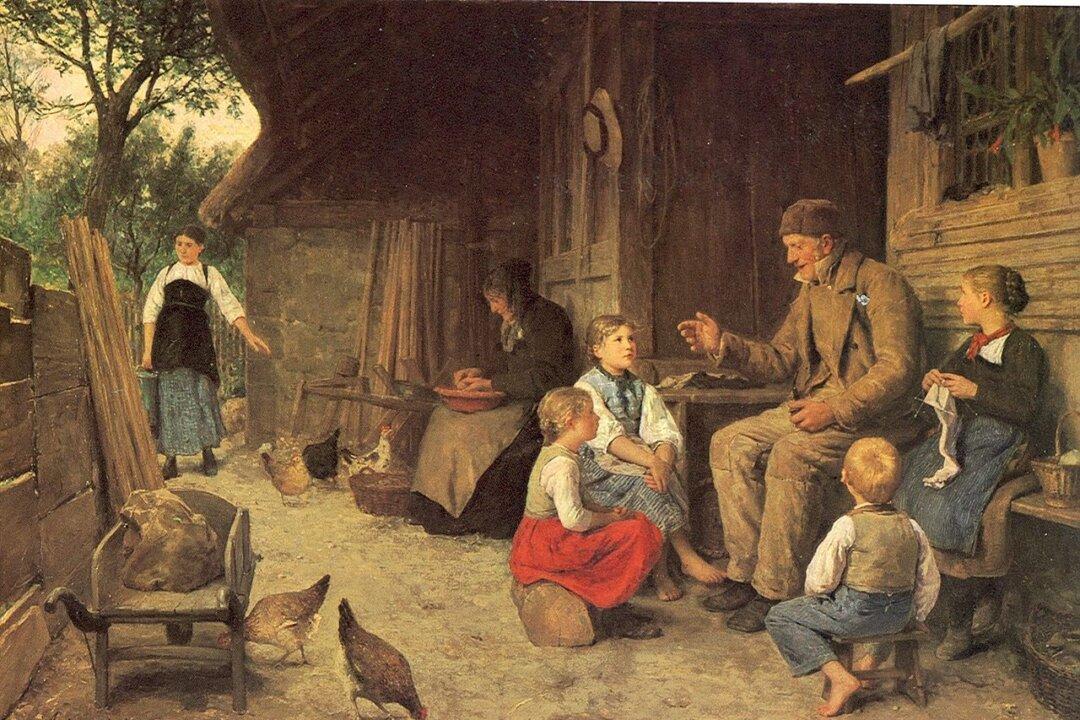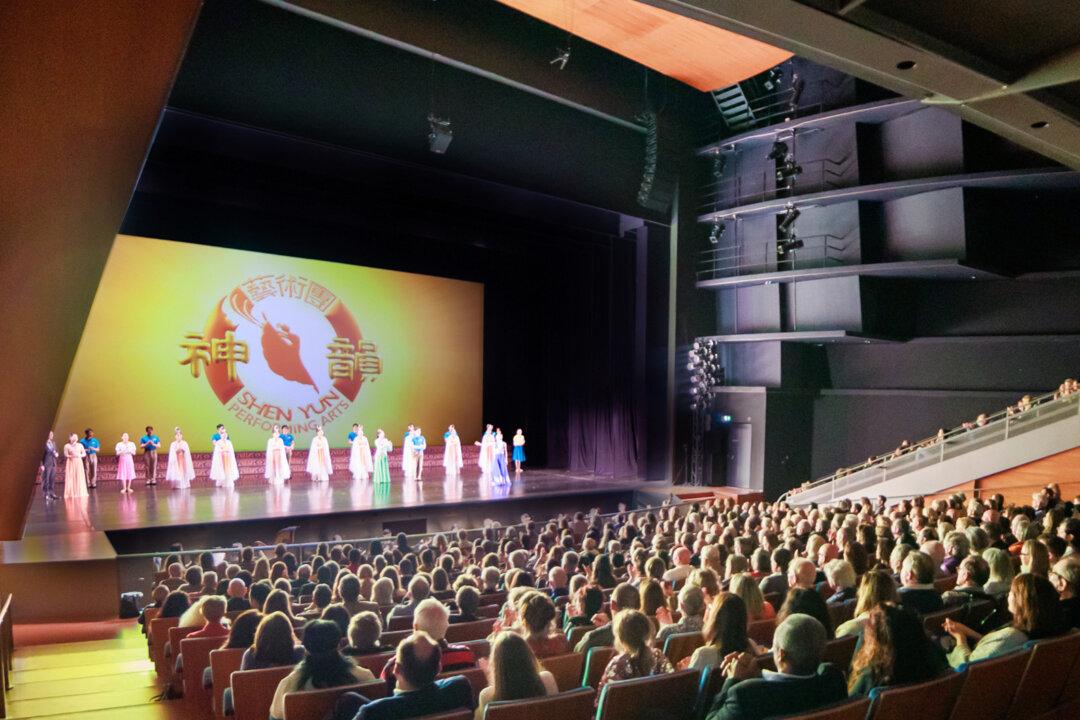Four children sit around an elderly man, their grandfather, and listen attentively as he tells a story in Albert Anker’s painting “Grandfather Telling a Story” (1884).
The setting for this painting is a rural Swiss homestead. Farming by peasants was the mainstay of the economy in most 19th-century European countries. Their farmsteads sustained them and provided for their needs. They grew their own food, made their own clothes, and made their own tools and implements as seen by the wheelbarrow in the foreground.






